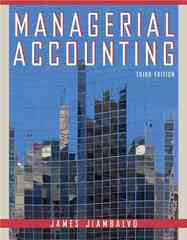Bell Company ("Bell") manufactures laptops. All products are sold via wholesalers, meaning that Bell does not have its own retail outlets. Top management was very disappointed with the financial performance last year. From the performance report, the budgeted revenue is US$40,000,000 with 5,000 units sold. However, the actual revenue is only US$38,500,000 with 5,500 units sold. In view of keen competition and economic downturn, management decided to set its objectives for the coming year as improving profitability by product growth and marketing campaigns. The product growth is achieved by producing high-quality laptops at a low cost with after-sales services, including a product return policy for defective products. Bell strongly believes that continuously improving its manufacturing processes and having satisfied employees are critical to implementing its strategy. Bell has six divisions: research and development, product/ process design, production, marketing, distribution, and customer services. Top management demands each division's unit head to propose actions under their respective units to meet Bell's objectives next year. REQUIRED (a) Based on the performance report, evaluate the financial performance for Bell's revenue. (4 marks) (b) Choose any TWO divisions and identify one activity with corresponding resource cost and cost driver in each division to support the company's objectives next year. Illustrate your arguments with examples. (8 marks) (c) Suggest TWO cost-reduction techniques to Bell to satisfy customer needs while reducing costs. (10 marks)(d) Recently, the production manager predicted production scheduling and control costs to vary in proportion to the number of labor hours spent or the number of components used. He decided to use regression analysis to explore this issue. After performing the regression analysis, the R-squared values for the number of labor hours spent and the number of components used are 0.33 and 0.85, respectively. (i) Which cost driver is more reliable for planning and control purposes? Explain. (3 marks) (ii) What percentage of the fluctuation of production scheduling and control costs depends on the number of labor hours spent? Explain. (4 marks) (iii) What do other issues need to be considered to finalize the cost driver? Advise. (4 marks)








